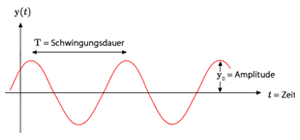Technical term Wiki
Vibration
A vibration (also oscillation) is described as a measure that repeats after a determined time interval.
Generally, the vibrationA vibration (also oscillation) is described as a measure that repeats after a determined time interval. More of a system is based on the periodic energy conversion between two forms of energy.
Matter is made out of atoms, which are made out of the nucleus (nucleons (made out of protons and neutrons)) that the electrons circle around. This creates a characteristic vibration of the atom. The entire matter vibrates, vibrating differently depending on the atom structure. The vibration itself is divided into different categories, such as free, forced, linear, etc. The oscilloscope is used to represent a vibration.

Vibration in geobiology and in practice
In geobiologyGeobiology deals with cause studies and shielding technology for restoring and maintaining health. More, human vibration is significant, the vibration that effects the human on the outside. We speak of harmonic and disharmonic vibrations just for this situation. The bipolar oscillation circuits integrated into the radiation protection mats vibrate harmonically and thus have a positive effect on humans and protect them from fault zones caused by natural radiationNatural radiation is a collective term for all of the types of the Earth's natural faults zones. Natural radiations are generally physical phenomena. More with interferenceInterference describes the superposition of two or more waves based on the principle of superposition - therefore the addition of their individual amplitudes. More.
» Vibration in detail on Wikipedia
Back to the technical term Wiki























